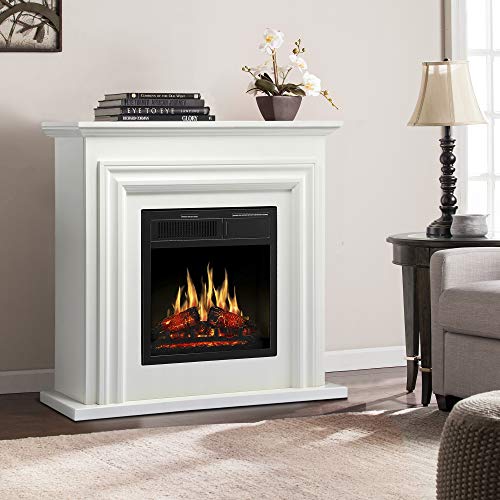What's The Reason Everyone Is Talking About Fireplaces And Stoves Right Now

The Comprehensive Guide to Fireplaces and Stoves
Fireplaces and stoves have been important to human civilization for centuries, functioning as a source of heat, light, and comfort. These home appliances can be found in various kinds and have developed over the years, dealing with diverse choices and technological advancements. This article supplies a helpful summary of fireplaces and stoves, highlighting their types, benefits, maintenance tips, and setup considerations.
Types of Fireplaces
The world of fireplaces is rich and varied. Here are the most common types:
Wood-Burning Fireplaces:
- Traditional and captivating.
- Requires experienced wood and regular upkeep.
- Produces an enjoyable scent and crackling noise.
Gas Fireplaces:
- Offer benefit and ease of usage.
- Offered in vented and vent-free options.
- More efficient and cleaner than wood-burning options.
Electric Fireplaces:
- Provide atmosphere without the requirement for a chimney.
- User-friendly with remote control options.
- Can be utilized as an additional heat source.
Pellet Stoves:
- Use compressed wood pellets as fuel.
- Highly efficient and eco-friendly.
- Often geared up with thermostats for temperature control.
Ethanol Fireplaces:
- Utilize bioethanol fuel, making them portable.
- Do not require venting, which permits flexible placement.
- Produce a reasonable flame with minimal smoke.
Outdoor Fireplaces:
- Designed for outdoor settings; can be wood or gas-burning.
- Great for amusing and enhancing yard aesthetics.
- Typically constructed from stone, brick, or metal.
Benefits of Fireplaces and Stoves
Incorporating a fireplace or range into a home offers numerous benefits:
- Aesthetic Appeal: Fireplaces work as striking centerpieces in any room, adding warmth and character to home decor.
- Increased Property Value: Homes with functional fireplaces tend to have greater resale values.
- Energy Efficiency: Modern fireplaces and stoves are designed to be more energy-efficient, which can cause lowered heating expenses.
- Backup Heating Source: In case of power outages, wood-burning and gas fireplaces can act as vital heating sources.
- Versatile Heating Solutions: Different kinds of fireplaces cater to numerous heating needs and way of lives, from comfortable atmosphere to efficient heating.
| Type of Fireplace/Stove | Fuel Source | Efficiency Rating | Maintenance Level |
|---|---|---|---|
| Wood-Burning | Wood | Moderate | High |
| Gas | Natural gas/LP | High | Low |
| Electric | Electrical power | High | Really Low |
| Pellet | Wood pellets | High | Moderate |
| Ethanol | Bioethanol | Moderate | Low |
| Outdoor | Wood or gas | Moderate | Differs |
Upkeep Tips
Appropriate maintenance extends the life of fireplaces and stoves, making sure security and efficiency. Here are some important tips:
Regular Cleaning:
- Wood-burning fireplaces need to be cleaned up after a complete season of usage to get rid of soot and creosote.
- Gas fireplaces require regular assessment of the burner and vents.
Regular Inspections:
- Have chimney sweeps perform yearly inspections to recognize obstructions or structural damage.
- Check the seals and gaskets on gas systems to prevent leakages.
Fire Safety:
- Install smoke and carbon monoxide gas detectors in homes with fireplaces or stoves.
- Keep a fire extinguisher near the fireplace or range for emergency situations.
Usage Quality Fuel:
- For wood-burning systems, constantly use experienced wood; prevent treated or painted wood.
- When utilizing pellets, ensure they are saved properly to prevent moisture absorption.
Manage Airflow:
- Keep vents and ducts clear to promote effective ventilation and airflow.
- Think about using glass doors or screens to reduce debris and ash in the living area.
Setup Considerations
Setting up a fireplace or stove requires mindful factor to consider of several factors:
Location:
- Choose a location that enables correct clearance and ventilation.
- Consider the design of your home and the benefit of natural heat circulation.
Structure Codes and Permits:
- Check regional policies concerning installations and needed authorizations.
- Engage a professional to guarantee compliance with safety requirements.
Fuel Type:
- Evaluate your fuel alternatives based upon availability, cost, and environmental effect.
- If choosing gas, make sure existing gas lines can accommodate the new home appliance.
Ventilation:
- Proper venting is essential for security and efficiency, particularly for gas and wood-burning systems.
- Speak with a professional to identify the best venting solution.
Visual Consideration:
- Select a style that matches your home's interior.
- Think about mantels, surround materials, and colors that match your decor.
FAQs
What is the very best type of fireplace for heating?
Gas fireplaces are generally more efficient for heating, while wood-burning fireplaces provide more ambient heat.
How frequently should I clean my fireplace?
Wood-burning fireplaces ought to be cleaned at least as soon as a year, while gas fireplaces need less regular attention depending on use.
Can I set up a fireplace myself?
While some property owners may try DIY setup, it is advised to employ an expert to guarantee safety and compliance with building regulations.
Are electric fireplaces efficient?
Yes, electric fireplaces are really efficient and can work as effective extra heating sources, specifically in smaller sized areas.
What is the life expectancy of a fireplace?
The life expectancy of a fireplace differs depending upon the material, type, and maintenance; however, a well-kept wood-burning fireplace can last over 30 years.
Fireplaces and stoves remain classic functions in homes, offering heat and ambiance. Understanding Read the Full Write-up , benefits, and upkeep requirements can help homeowners make informed decisions about setup and care. With cautious preparation and regular upkeep, these home appliances can boost both the convenience and value of a home for several years to come.

